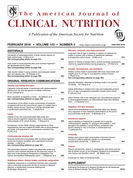Plasma Vitamin C and Type 2 Diabetes: Genome-Wide Association Study and Mendelian Randomization Analysis in European Populations
OBJECTIVE Higher plasma vitamin C levels are associated with lower type 2 diabetes risk, but whether this association is causal is uncertain. To investigate this, we studied the association of genetically predicted plasma vitamin C with type 2 diabetes. RESEARCH DESIGN AND METHODS We conducted genome-wide association studies of plasma vitamin C among 52,018 individuals of European…












